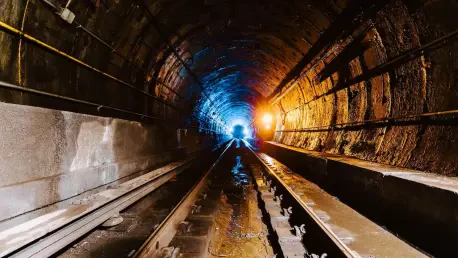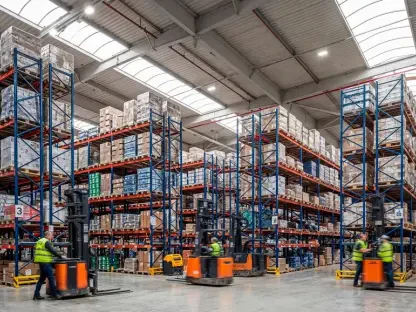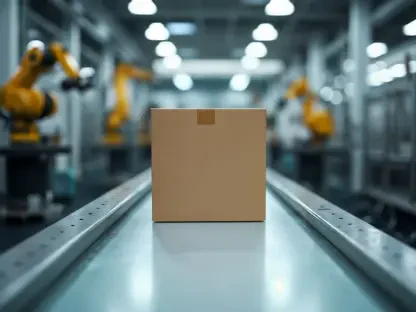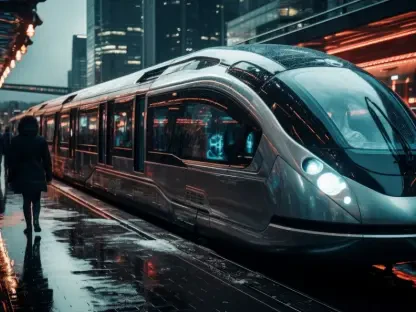The transformative journey of high-speed rail development in the UK has reached a notable milestone with the advancement of the HS2 project, thanks to the impressive achievements of Tunnel Boring Machine (TBM) Emily. TBM Emily’s recent completion of a crucial journey beneath London highlights the engineering advancements driving the HS2 project forward towards its completion. Representing a key element of the Northolt Tunnel construction, Emily has traveled 3.4 miles underground, underpinning the broader effort to enhance connectivity and travel speeds between major UK cities. As TBM Emily navigates through London’s intricate subterranean environment, the HS2 project showcases both engineering prowess and collaborative industry innovation.
Key Elements of the Northolt Tunnel
TBM Emily’s Journey and Technical Milestones
Emily embarked on her drilling mission in February 2024, showcasing remarkable engineering design and robustness. Weighing an astounding 1,700 tonnes and featuring an expansive cutter head of 9.11 meters in diameter, Emily was meticulously crafted by tunneling machinery giant Herrenknecht. This impressive feat involved excavating a massive 775,000 tonnes of London Clay and securely placing 17,514 tunnel segments, highlighting the machine’s efficiency and capability in handling large-scale tunneling tasks. Emily’s journey is a testament to engineering adaptation, tailored specifically for navigating the complex London Clay geological composition, reflecting strategic foresight and precision in engineering design for urban infrastructure projects.
Construction Logistics and Resource Management
The Northolt Tunnel, a central piece of the HS2 rail network, stretches 8.4 miles and is being driven forward by four TBMs working collaboratively. Two of the machines commenced their journey from West Ruislip, tackling the tunnel’s western section, while the other pair, including Emily, launched from Victoria Road, North Acton, towards the east. Upon reaching Green Park Way in West London, the removal of these mammoth machines is fully coordinated, with skillful pressure control measures orchestrating a safe extraction process despite high water pressure challenges. Concurrently, resource management is pivotal, particularly in steering the London Clay excavated material towards sustainable ends. This material’s subsequent redistribution for beneficial reuse underscores HS2’s commitment to eco-efficient practices.
Collaborative Engineering and Execution
Unified Efforts by SCS JV and Team Dynamics
The collaborative effort bringing TBM Emily’s journey to fruition was spearheaded by Skanska Costain STRABAG JV (SCS JV), which epitomizes a modern approach to construction projects. During peak operations, Emily achieved a tunneling pace of approximately 38 meters per day, illustrating the capabilities of technologically advanced machinery and skilled human resource alignment. The labor force organization optimized around three distinct teams—each composed of 48 workers—emphasized operational safety and efficiency, essential tenets in HS2’s overarching construction strategy. Safety protocols, operational planning, and coordination form the backbone of HS2 operations, a standard crucial for constructing large-scale infrastructure within densely urbanized settings.
Leadership Perspectives and Project Continuation
Dave Hannon, overseeing the project as Director at SCS JV, lauded TBM Emily’s arrival at Green Park Way as a pivotal accomplishment, bridging the current project phase with its anticipated completion. His appreciation extended to the dedicated teams and their technical expertise that aligned seamlessly with the project’s strategic goals. The commitment to finishing the remaining tunnel sections, which comprise critical components such as ventilation shafts and portals, underscores the ongoing initiative to propel HS2 towards completion. The Northolt Tunnel stands as a vital part of this ambitious UK transportation project, with its completion signaling substantial progress in attaining the envisioned infrastructure connectivity.
Sustainability and Legacy of HS2
Environmental and Material Reuse Initiatives
Environmental responsibility woven into HS2’s fabric is exemplified by meticulous resource management strategies during TBM operations. Excavated materials pass through the London Logistics Hub before being transported for direct, beneficial reuse across several sites. Distribution initiatives channel materials toward Cambridgeshire, Kent, and Warwickshire, ensuring that sustainable practices permeate construction processes. Through such strategic recycling and lifecycle management of excavation by-products, HS2 aligns with contemporary expectations for environmentally conscientious infrastructure development, balancing the modern world’s needs while minimizing ecological footprints.
Long-term Vision and Future Milestones
The transformative journey of high-speed rail in the UK recently celebrated a pivotal milestone with the progress of HS2, primarily due to the remarkable achievements of Tunnel Boring Machine (TBM) Emily. Emily’s recent successful completion of a significant task beneath London not only underscores the engineering sophistication fueling the HS2 but also marks a critical step towards its finalization. As part of the Northolt Tunnel construction, Emily has adeptly navigated 3.4 miles underground, embodying the larger ambition to improve connectivity and accelerate travel between major UK cities. As TBM Emily skillfully maneuvers through London’s intricate underground landscape, the HS2 project exemplifies both technical excellence and innovative teamwork. This development embodies broader aspirations to transform transportation across the UK, promising enhanced speed and efficiency in rail travel, ultimately bridging regions and fostering greater economic integration.









